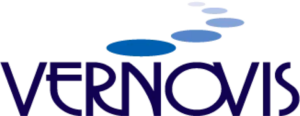Cultural fit has become crucial in hiring, ensuring that employees’ values and the organization’s culture align perfectly. This alignment fosters a productive, satisfying, and enduring workplace. This blog explores practical strategies for assessing cultural fit, highlighting the importance of a thorough and considerate approach to building a team that thrives together.
Why is Cultural Fit important?
Cultural fit is more than shared interests or backgrounds; it’s the alignment of personal values, work habits, and beliefs with an organization’s core values and culture. This concept plays a significant role in an employee’s ability to integrate seamlessly into a team, contribute positively to the company’s environment, and find personal fulfillment in their work.
Employees who feel a strong sense of belonging and alignment with their workplace’s culture are likelier to stay with a company long-term, reducing turnover rates. For this reason, understanding and prioritizing cultural fit in the hiring process can lead to higher job satisfaction, improved performance, and a cohesive team dynamic.
Attracting Candidates Who Fit Your Culture
Crafting Job Descriptions
When it comes to assessing culture fit, a job description can be more than a list of required skills and experiences; it can serve as the initial handshake between a company and potential candidates and where you start translating your culture into tangible terms that can resonate with the right individuals. It should clearly communicate the company’s core values and mission, ensuring that the applicants understand what the company stands for and encouraging those with similar values to apply.
The tone of a job description can subtly communicate the company culture to potential applicants. A formal tone may attract individuals who prefer structured environments and clear hierarchies. In contrast, a more casual or conversational tone might appeal to those seeking a collaborative and flexible work setting. The language used can signal to candidates the type of interpersonal communication and work environment they can expect, helping to ensure that those who apply are more likely to align with the company’s cultural norms.
Interviewing Candidates
While the job description serves as a beacon for attracting suitable candidates, the interview process is where you can go deeper in assessing the nuances of each candidate’s potential fit within your organization. This stage of the hiring process is your opportunity to move beyond what’s on paper and explore the behaviors, thought processes, and values that define each candidate.
Use Behavioral Questions
Behavioral interview questions are designed to reveal insights into a candidate’s past behavior and decision-making processes, offering clues about their future performance and cultural fit. Employers can gauge how their responses and actions align with the company’s values and expectations by asking candidates to describe specific instances where they faced challenges, worked in a team, or led a project. These questions help uncover the candidate’s problem-solving style, adaptability, teamwork, and leadership qualities, which are crucial for assessing cultural fit.
Ask, “Why Us?”
Asking candidates why they are interested in your company and the position can provide deep insights into their values and motivations. This question allows candidates to express what they find appealing about your organization’s mission, culture, and opportunities. Responses that go beyond surface-level reasons and demonstrate a thoughtful engagement with the company’s values and goals indicate a potential cultural fit. This question also helps weed out candidates who may not be genuinely interested in or understand what makes your company unique.
Including the Team in a Cultural Fit Assessment
Once the foundational assessments through job descriptions and interviews are underway, incorporating the team introduces a new dimension to understanding a candidate’s cultural fit.
Diverse Opinions
Involving diverse team members in hiring (such as through panel interviews) can provide varied perspectives on a candidate’s potential cultural fit. Different team members can assess various aspects of a candidate’s personality, work style, and values, offering a more rounded view of how they might integrate into the company. This collaborative approach to evaluating candidates ensures that a single perspective does not bias cultural fit assessment and considers the multifaceted nature of workplace dynamics.
Observing Interactions
Introducing candidates to potential future colleagues and observing their interactions can offer invaluable insights into their ability to mesh with the team. Group interviews or informal meet-ups allow for observing social dynamics, communication styles, and the candidate’s approach to collaboration. These interactions can highlight how well a candidate listens, responds to feedback, and engages with others, which are critical components of a successful team member and indicative of an excellent cultural fit.
Beyond the Interview
Work Trials
Offering candidates a short-term project or work trial is a practical method to observe their skills, work ethic, and interaction with the team in a real work environment. This approach provides concrete evidence of how well the candidate fits into the workplace culture, manages tasks, and collaborates with others. It also allows the candidate to assess their own fit within the company, making the decision to join the team more informed and mutual.
Tailored Reference Checks
Conducting reference checks to understand the candidate’s work relationships, response to feedback, and conflict resolution strategies can offer further insights into their cultural fit. Asking specific questions about the company’s core values and work environment can reveal how the candidate navigated similar contexts. References can provide third-party validation of the candidate’s ability to thrive in environments identical to your company’s, adding an additional layer of assurance to the hiring decision.
Social Media
By examining a candidate’s professional social media presence, you gain additional perspectives on their alignment with your company’s values and culture, complementing the holistic view of their potential fit within your organization.
Professional Profiles
Reviewing a candidate’s professional online profiles, such as LinkedIn or industry-specific forums, can offer a broader understanding of their professional persona, achievements, and how they engage with their professional community. This insight can reveal not just the candidate’s skills and experiences but also their interests, passions, professional brand, and the type of content they share or produce. It provides a glimpse into their professional demeanor and how they might represent themselves and, by extension, your company. However, it’s essential to focus on professional platforms and content, steering clear of personal judgments based on their private lives or activities.
A Word on Privacy
When exploring a candidate’s online presence, it’s critical to maintain a respectful boundary concerning their privacy. Only public, professional information should be considered when assessing a cultural fit. This approach respects the candidate’s privacy while providing additional context about their professional interests and engagement. Ethical considerations should guide hiring using social media, ensuring the process remains fair and non-discriminatory.
Assessing Culture Fit – Final Thoughts
Assessing cultural fit is a nuanced process that extends beyond verifying skills and experiences. It involves a comprehensive evaluation through well-crafted job descriptions, insightful interviewing techniques, team involvement, practical work trials, tailored reference checks, and ethical consideration of professional online profiles. By carefully integrating these strategies, employers can enhance their hiring process to ensure that the new hires are capable and qualified and that they share the company’s values and vision, contributing to a cohesive, dynamic, and productive workplace. Remember, prioritizing cultural fit is essential in building a team that works well together and supports and amplifies the overarching goals and culture of the organization.
Get Help Recruiting Top Talent with Vernovis
At Vernovis, we take a people-first approach to placing talent and building a dynamic and competitive team. We differentiate ourselves from other staffing services by offering uncompromising honesty, collaboration that relies on openness, sharing, and accountability to achieve shared goals, and a fundamental belief that we are in business to serve clients and candidates in ways that exceed their expectations.
We can assist if you are a Midwest company looking for top-tier talent to fit your company in the areas of Technology, Cybersecurity, Finance, & Accounting. Reach out to us today.




